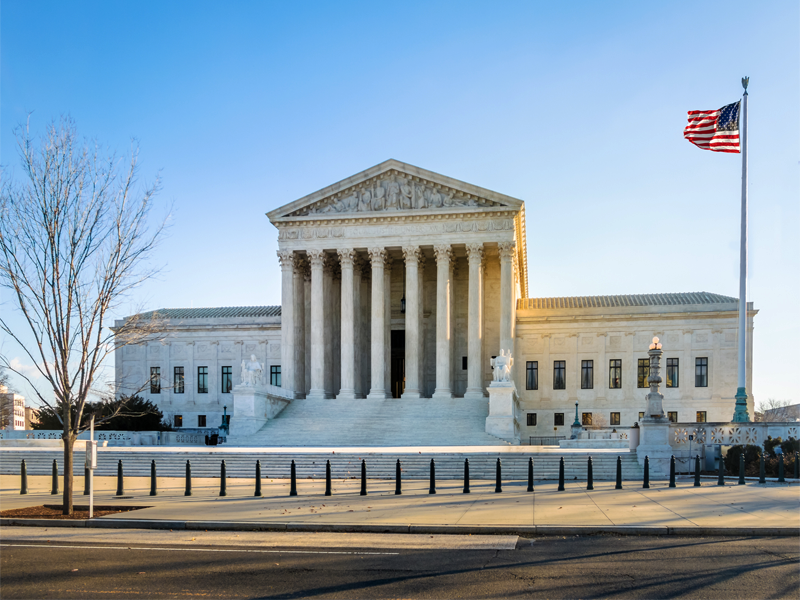This FAQ sets out the BSR perspective on net zero targets. We believe that setting science-based net-zero targets—and more importantly, taking ambitious action to achieve these targets—is core to the role that companies should play in helping achieve the Paris Agreement’s stretch target of limiting global warming to 1.5°C above pre-industrial levels.
Defining Net Zero
What is the definition of net zero?
The Intergovernmental Panel on Climate Change (IPCC) defines net-zero emissions as the point when “anthropogenic emission of greenhouse gases to the atmosphere are balanced by anthropogenic removals over a specified period.” Put more simply, net zero is achieved when remaining human-caused greenhouse gas emissions are counterbalanced by removing greenhouse gas emissions from the atmosphere via carbon removal.
Why do we need company net zero targets?
The Paris Agreement established our collective vision for a net-zero economy in which we limit warming to 1.5°C above pre-industrial levels. However, current climate science predicts warming in the range of 2.5°C-4.0°C, bringing irreversible changes to oceans, ice sheets and global sea levels, and causing impacts such as extreme heat and weather, species loss, crop yield reductions, fishery decline, disrupted supply chains, public health crises, and displaced communities.
BSR’s vision is an inclusive net-zero economy no later than 2050, which the IPCC has concluded is needed to hold warming to 1.5°C. While some governments (such as the EU-27, China, Japan, South Korea, Canada, South Africa, the United States, and over 100 other countries) have established their own net-zero pledges, company net-zero targets are also needed to build net-zero economies.
What is the definition of a company net-zero target?
Companies need clear direction on what net-zero targets are and which actions drive real climate progress, and for this reason the launch of the Science Based Targets initiative (SBTi) Net-Zero Standard in late 2021 marked a significant milestone.
The SBTi Net-Zero Standard is the first science-based and independently certifiable standard that assesses a company's net-zero targets and clearly grounds them into 1.5°C-aligned short-term and long-term action. The
SBTi Net-Zero Standard gives companies confidence that their near-term and long-term targets are scientifically sound, aligned with what is needed to contribute to a habitable planet, widely understood by stakeholders.
The SBTi Net-Zero Standard defines a net-zero target as:
-
Reducing scope 1, 2, and 3 emissions to zero or to a residual level that is consistent with reaching net-zero emissions at the global or sector level in eligible 1.5°C-aligned pathways.
-
Neutralizing any residual emissions at the net-zero target year and any GHG emissions released into the atmosphere thereafter.
The SBTi Net-Zero Standard sets out four key elements that make up a net-zero target: (1) a near-term science- based target; (2) a long-term science-based target; (3) mitigation beyond the value chain; (4) neutralization of any residual emissions.
What are near-term science-based targets and why are they important?
Near-term science-based targets are 5-10-year greenhouse gas mitigation targets that require companies to align their Scope 1 and 2 targets with a 1.5°C pathway goal while Scope 3 ambitions should retain a threshold of well below 2°C. When companies reach their near-term target date, they must calculate new near-term science-based targets to serve as milestones on the path towards reaching their long-term science-based target.
Near-term science-based targets are needed to galvanize the immediate and ambitious action needed for significant emissions reductions to be achieved by 2030. Near-term emissions reductions are critical to not exceeding the global emissions budget, which is the maximum amount of cumulative emissions consistent with limiting warming to a 1.5°C pathway.
What are long-term science-based targets and why are they important?
Long-term science-based targets show companies how much they must reduce value chain emissions to align with reaching net-zero in line with 1.5°C pathways by 2050 or sooner (2040 for companies in the power sector).
Long-term science-based targets are needed to drive economy-wide alignment and long-term business planning to reach the level of global emissions reductions needed for climate goals to be met based on science. A company cannot claim to have reached net-zero until the long-term science-based target is achieved.
Does a company need both near-term and long-term science-based targets?
If a company sets a long-term science-based target to reach the level of decarbonization required to reach net- zero at the global or sector level in 1.5°C pathways within a 10-year timeframe, the near-term science-based target is not required.
What is “mitigation beyond the value chain” and why is it important?
The concept of “mitigation beyond the value chain” refers to mitigation action or investments outside of a company’s value chain, such as activities that avoid or reduce greenhouse gas emissions or remove and store greenhouse gases from the atmosphere.
Mitigation beyond the value chain involves companies playing a critical role in accelerating the transition to net- zero economies and increasing the likelihood that the global community stays within a 1.5 ̊C carbon budget.
Mitigation beyond the value chain represents ambitious action, but is not substitute for the reduction of a company’s own value chain emissions.
What is “neutralization of any residual emissions” and why is it important?
The concept of “neutralization” refers to measures that companies take to remove carbon from the atmosphere and permanently store it to counterbalance the impact of their own emissions that remain unabated.
Although the SBTi Net-Zero Standard expects companies to reduce their emissions by at least 90%, some residual emissions may remain, and these emissions must be neutralized to reach net-zero emissions.
Should science-based targets vary by industry?
Yes. The SBTi Net-Zero Standard includes both a “cross-sector pathway” and multiple “sector-specific pathways” for setting science-based targets. Companies in the power generation, forestry, land-use, and agriculture sectors are required to set targets using “sector-specific pathways”, while companies in all other industries can choose between a “cross-sector pathway” or one of several “sector-specific pathways” that either have or are in the process of being developed.
What is the scale of emissions reduction is envisioned?
Using the “cross-sector pathway” companies are expected to set “near-term science-based targets” that reduce emissions at a linear annual rate of 4.2%; however, some “sector-specific pathways: vary significantly from the cross-sector pathway in the near-term. For “long-term science-based targets” most companies are expected to reduce emissions by 90% or more from 2020 levels.
How should scope 1 and 2 emissions be addressed in net-zero targets?
Near-term science-based targets must cover at least 95% of company-wide scope 1 and 2 emissions.
How should scope 3 emissions be addressed in net-zero targets?
Companies with scope 3 emissions that are at least 40% of total emissions must (1) cover at least 67% of their scope 3 emissions in near term science-based targets and align to well-below 2°C ambition, and (2) cover all material sources of scope 3 emissions in the value chain (with a materiality threshold of 90%) in long-term science-based targets and align with 1.5°C scenarios.
Do “avoided emissions” count towards net-zero targets?
A company’s product avoids emissions if it has lower life cycle emissions relative to a different product providing an equivalent function. Companies should pursue avoided emissions as part of their climate strategy, and products with lower life cycle emissions will help other companies achieve their net-zero targets—however, avoided emissions occur outside of the product’s life cycle, do not count as a reduction of a company’s scope 1, 2 and 3 emissions, and are not relevant for a net-zero target.
Does the purchase of “carbon credits” count towards net-zero targets?
The purchase of carbon credits from outside the value chain can be complementary to achieving net-zero targets, and companies can increase their impact by reducing emissions beyond their own value chain through credits and other forms of climate investment. However, carbon credits do not count as reductions toward meeting science-based net-zero targets and companies should only account for reductions that occur within their operations and value chain. Companies should make all viable efforts to reduce emissions consistent with a 1.5°C trajectory before looking to purchase credits.
High-quality carbon credits can enhance reductions and removals in the near term, including for hard-to-abate industries, and contribute crucial funding to activities that avoid, reduce, or remove emissions. These include reduction of short-lived climate pollutants and urgent action to stop tropical deforestation. The use of credits, whether avoided emissions credits, reduced emissions credits, or removal credits, must also meet the conditions of approved third-party standards and/or governments.
Company investment in carbon credits should also deliver additional social benefits or synergize with other environmental benefits, such as progress towards the Sustainable Development Goals. In addition, investment in underfunded climate solutions can bring down their price over time, target innovation in the value chain, decrease residual emissions over time.
Business Transformation
What is BSR’s ambition for companies?
BSR believes that net-zero goals are needed to incentivize decarbonization of the value chain and spur the business transformation needed to achieve the Paris Agreement’s stretch target of limiting global warming to 1.5°C above pre-industrial levels.
For this reason, we only support long-term science-based targets that are accompanied by near-term science- based targets that commit companies to both decarbonize their own footprint and transform their value chains to be consistent with a 1.5°C pathway.
What is business transformation and why does BSR emphasize it?
BSR defines business transformation as reshaping key business functions, models, products, and services to build inclusive net-zero value chains, and we emphasize action to mitigate scope 3 emissions.
Unlike decarbonizing a company’s own GHG footprint via scope 1 and 2 reductions, which can be largely accomplished by sustainability and operations functions, building a net-zero value chain has much broader implications to a company’s growth strategy and operating model. Companies will need to undertake business transformation towards net-zero value chains, harnessing functions outside sustainability and operations, and we encourage companies to think strategically about the business transformation needed to achieve net-zero targets.
What about the impact on people?
The adverse impacts of climate change will be exacerbated for communities that already face underlying socioeconomic inequalities or injustices, and net-zero targets are intended to mitigate these impacts. However, it is essential that climate justice—which we define as the recognition that climate change disproportionately impacts some communities over others and exacerbates underlying systemic inequalities —is central to any company climate action plan.
We emphasize the following three priorities in actions to achieve net-zero targets:
- A just energy transition: It is essential that the transition to a net-zero economy doesn’t leave behind workers and communities traditionally dependent on fossil fuel industries for jobs and livelihoods, including women who are underrepresented in today’s “green jobs” economy. Planning, dialogue, and engagement with workers and stakeholders is essential for a just transition, which aims to ensure social and economic opportunities of climate action are maximized and that fundamental labor principles and rights are upheld.
-
Upholding Human Rights: The development and procurement of decarbonization technology and renewable energy requires the mining of metals and minerals—however, the extraction of many of these materials are associated with armed conflict, land and water grabs, violation of the rights of Indigenous peoples, the denial of workers’ rights to decent work and a living wage, and other human rights abuses. Companies need to establish business practices based on the UN Guiding Principles on Business and Human Rights to address the actual and potential adverse human rights impacts associated with this transition, implying more integrated approaches to climate change and human rights strategy.
-
Ensuring Equitable Access to Clean Energy: When companies implement net-zero targets across their value chains suppliers will need access to renewables energy to meet their customers’ expectations. However, not all markets have access to clean technologies or renewables in the electrical grid, and under- resourced communities are more likely to experience energy insecurity and lack access to affordable, efficient, secure, and reliable clean energy. Identifying gaps in access to energy across the value chain is an important step to deciding what proactive actions companies can take—such as policy advocacy, financing, and coalition building—to counter inequities in access to clean energy.
How does BSR define climate leadership?
BSR believes that climate leadership means going beyond the minimum requirements of an SBTi Net-Zero Standard. We emphasize:
-
Selecting a net-zero target year earlier than 2050 if a company’s footprint is largely in developed countries
-
Setting and delivering an interim emission reduction target consistent with a 1.5°C trajectory
-
Compensating for emissions outside the value chain enroute to your target year
-
Implementing business transformation across functions
-
Supporting communities which have suffered from climate injustice when implementing net-zero commitments
-
Using a company’s influence to advocate for policy which advances climate justice and supports a just transition for all.
What are the main criticisms of net-zero targets, and what is BSR’s perspective on these criticisms?
Net-zero commitments are also increasingly subject to five criticisms which implementation must address to be truly credible and transformative.
Critique: Net-zero commitments divert attention from immediate abatement, effectively licensing short-term emissions.
Response: Companies with net-zero targets must also set and deliver an interim emissions reductions target following a 1.5°C trajectory, for example under the Science-Based Targets initiative, or as part of the Race to Zero campaign.
Critique: Net-zero commitments, which are typically based on a company’s fair share of global net-zero carbon dioxide by 2050, should not be inequitable between developed and developing countries.
Response: Companies whose emissions footprint sits largely in developed countries who have high historical emissions, should aim to achieve net zero ahead of 2050.
Critique: By focusing attention on removals which net out emissions in the target year, net-zero targets divert attention from immediate climate investments outside the value chain needed to keep 1.5°C within reach.
Response: Companies can dramatically increase their impact on the climate crisis by not merely abating emissions in the value chain on route to net-zero, but also compensating for emissions outside the value chain, for example by investing in climate solutions and methane reductions.
Critique: Net-zero commitments may greenwash business-as-usual action.
Response: Building a net-zero value chain requires genuine business transformation across functions, from supply chain engagement and procurement, to finance, and research and development and product design. Net-zero implementation then must demonstrate business transformation across these functions, including integration into the company’s business strategy with a clear climate action plan which has been vetted and approved by shareholders.
Critique: Net-zero commitments perpetuate climate and environmental injustice, for example in BIPOC and low wealth communities.
Response: Companies can support these communities through its net zero implementation. For example, renewable electricity can be purchased from companies with a proven track record of increasing energy access, carbon credits can be selected which benefit these communities, and low-carbon products and services can be procured in a manner which improves the equitable distribution of benefits of the net zero economy. This is where net-zero implementation strategies intersect with equity in the sustainability agenda.
Let’s talk about how BSR can help you to transform your business and achieve your sustainability goals.
























